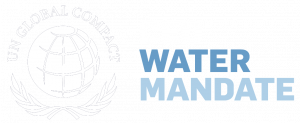Enterprise water targets can provide several benefits to companies. They can help a company engage the interest of senior decision makers (e.g., board members, shareholders), identify priority locations and shared water challenges across the value chain, prioritize opportunities to engage in water stewardship, and contribute to meaningful risk reduction and collective action where it matters the most. However, in setting and using enterprise water targets, several difficulties do have to be confronted.
The shared nature of water challenges will require others to set targets informed by catchment context, and all targets—the company’s own targets and the targets set by those who share the water challenge—will have to be updated as the company’s value chain configuration and each catchment’s conditions change. Local interventions and actions, too, will be needed to meet targets that respond to local shared water challenges and stakeholder priorities. Over time, enterprise water targets will have to be seen to deliver sustained benefits—to deliver value and reduce shared water challenges.
The steps outlined here offer many entry points and two specific ways for companies to set enterprise targets, depending on their resources, capacity, and expertise: outcome-oriented water targets and process-oriented water targets. Regardless of the pathway chosen, companies should always
- focus on the shared water challenges of greatest relevance to the company and its stakeholders;
- engage stakeholders at all stages during target-setting, from identification of shared water challenges to agreement on metrics and appropriate targets;
- link enterprise water targets to site targets and action plans that respond to local water risks and shared water challenges;
- view target-setting as an iterative process, both when working through each of the steps outlined in this working paper and once targets are set; and use the best available science, policy objectives, and leading practices to guide the implementation of interventions to meet the targets.
Given the shared nature of water challenges, it is likely that other stakeholders in priority sections of the value chain may have targets similar to companies’ targets. Stakeholder engagement is therefore a crucial part of all the steps—it is critical to the proposed target-setting process. Companies should leverage stakeholders’ knowledge of stakeholders when determining priority water challenges, agreeing on the desired conditions, understanding a company’s contribution to the challenges, identifying existing collaborative efforts, setting targets, determining implementation strategies, and measuring progress.
Like enterprise water targets, this working paper is meant to be updated over time on the basis of feedback from companies and other stakeholders. This guidance will maintain alignment with other initiatives and guidance for setting water targets informed by catchment context.
